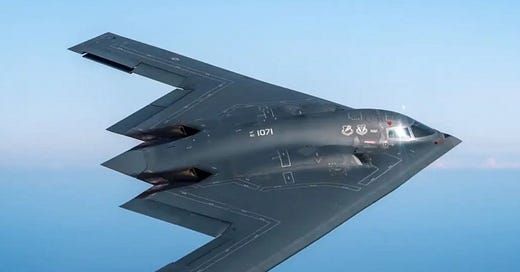3D Chess in the Middle East: Has the U.S. Stepped Into a Strategic Trap?
In the ever-shifting sands of Middle Eastern geopolitics, what may appear to be a linear conflict is often a multi-layered game of strategy. Recent escalations between Iran and Israel—punctuated by continuous attacks, proxy mobilization, and heightened U.S. involvement—suggest something more complex than tit-for-tat warfare. What we’re witnessing may not be a spontaneous clash but a deliberate game of geopolitical 3D chess.
Iran’s repeated provocations against Israel are not random acts of hostility. They are calculated moves intended to test boundaries, draw reactions, and manipulate the broader balance of power in the region. By applying sustained pressure on Israel, Iran isn’t just targeting its regional rival—it’s forcing the hand of the United States. Washington, bound by deep strategic and political commitments to Israel, finds itself increasingly entangled. The question is: was this Iran’s plan all along?
Iran’s approach relies heavily on its proxy network—Hezbollah in Lebanon, the Houthis in Yemen, and various militias in Iraq and Syria. These groups give Tehran a long reach without direct accountability. At the same time, each attack or escalation creates a dilemma for Israel and the U.S.: respond and risk regional war, or hold back and appear weak. Iran thrives in that uncertainty.
The United States, meanwhile, walks a tightrope. Intervening too aggressively risks triggering a full-scale conflict, alienating key regional partners, and inflaming domestic debates about military overreach. Staying on the sidelines, however, could embolden Iran and undermine American credibility. The timing is delicate, especially as Washington seeks to maintain its strategic bandwidth in the Indo-Pacific, support Ukraine, and manage domestic political pressure.
Israel, caught in the middle, is under no illusion about Iran’s intentions. Every rocket fired and drone launched is viewed through the lens of existential threat. But even Israel’s military superiority is constrained by the wider chessboard. A heavy-handed response risks drawing in Hezbollah from the north or triggering Iranian retaliation through other proxies. Precision becomes as important as power.
What makes this truly 3D chess is the intersection of military, economic, and psychological dimensions. A strike in southern Lebanon may ripple through oil markets. A speech in Tehran could move currencies. A cyberattack might be as impactful as a missile. And all of it plays out in front of global audiences—investors, allies, adversaries—each interpreting every move in real time.
Layered onto this are the global stakes. China and Russia are watching closely, and in some cases, quietly encouraging Iran’s posture. Disrupting U.S. focus and fragmenting Western cohesion serves their interests. Every American carrier deployed to the Gulf is one less positioned to deter Beijing in the Pacific. Every dollar spent on deterrence in the Middle East is a strain on U.S. political capital.
This isn’t checkers—it’s strategic calculus unfolding across domains. Iran may be counting on escalation fatigue in the West. Israel is banking on deterrence and precision. The U.S. is trying to balance all of it while avoiding being dragged into a broader war.
Whether this ends in de-escalation, regional rupture, or strategic realignment depends on who truly understands the rules of the board—and who’s willing to flip it.“When the B-2 Takes Flight, It’s Never Just About the Target”it’s about shifting the entire board, reminding every player that the queen has entered the game.”
Thoughts ;
Bringing out the queen is powerful, but risky.It raises the stakes, quickens the pace, and leaves no room for bluffing. The trap the U.S. may have walked into isn’t just military—it’s narrative, symbolic, and psychological. Iran doesn’t have to win on the battlefield. It only has to turn American strength into global doubt.




